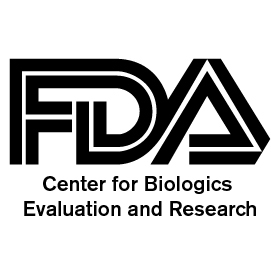 The sprawling Food and Drug Administration (FDA) campus in Silver Spring, Maryland, will soon be welcoming another major regulatory component of the agency: the Center for Biologics Evaluation and Research (CBER). Beginning about May 1, moving vans will collect CBER employees from various leased suburban Maryland locations and deliver them to the federally owned 130-acre Federal Research Center at White Oak. One of six centers within the FDA, the CBER pursues a mission “to ensure the safety, purity, potency, and effectiveness of biological products including vaccines, blood and blood products, and cells, tissues, and gene therapies for the prevention, diagnosis, and treatment of human diseases, conditions, or injury.” Protecting the public against emerging diseases and bioterrorism is also part of CBER’s mission.
The sprawling Food and Drug Administration (FDA) campus in Silver Spring, Maryland, will soon be welcoming another major regulatory component of the agency: the Center for Biologics Evaluation and Research (CBER). Beginning about May 1, moving vans will collect CBER employees from various leased suburban Maryland locations and deliver them to the federally owned 130-acre Federal Research Center at White Oak. One of six centers within the FDA, the CBER pursues a mission “to ensure the safety, purity, potency, and effectiveness of biological products including vaccines, blood and blood products, and cells, tissues, and gene therapies for the prevention, diagnosis, and treatment of human diseases, conditions, or injury.” Protecting the public against emerging diseases and bioterrorism is also part of CBER’s mission.
The on-going FDA consolidation was first authorized back in 1990 through the FDA Revitalization Act. The CBER can trace its origins still further back. Deaths of children from contaminated vaccines led to the Biologics Control Act of 1902, which regulated the interstate commerce in antitoxins, serums and vaccines. Originally called the Laboratory of Hygiene, the center’s name and oversight shifted through the decades. In 1937, the Division of Biologics Control formed within the National Institute of Health. Transfer to the FDA came in 1972, along with another new name, Bureau of Biologics, and an expanded mandate to regulate blood products and serums for allergy shots as well as vaccine. A 1982 merger with the Bureau of Drugs formed the National Center for Drugs and Biologics, but by 1988, drug and biologics components were separated again, creating the Center for Drug Evaluation and Research (CDER) and the CBER. CDER focuses on chemically synthesized drugs, while CBER regulates products derived from living sources (whether human, animal, or microbiological), often through advanced biotechnologies. Growing awareness of HIV and its spread through blood transfusions and related products led to CBER taking responsibility for regulating HIV/AIDS-related products.
“Biological products touch people’s lives on a daily basis,” says Dr. Karen Midthun, director of CBER. Each year, the center regulates over 200 million vaccinations, 29 million transfusions of blood and blood components, and 1.6 million musculoskeletal tissue transplants. Emerging biologic therapies are innovative, complex and vulnerable to contamination, presenting major technological and regulatory challenges to the CBER. CBER reviewers depend on an equally sophisticated regulatory science and research program to support their decisions. The CBER’s Strategic Plan for Regulatory Science and Research, FY 2012–2016, identifies the center’s 5 strategic goals for meeting these challenges:
- Increase national preparedness for threats from terrorism, pandemic influenza, and emerging infectious diseases;
- Improve global public health through international cooperation including research and information sharing;
- Enhance ability of science and technology to develop safe and effective biological products;
- Ensure the safety of biological products; and
- Enhance research excellence and accountability.
Enhancing research throughout the FDA was a major driver behind consolidation of the agency at White Oak. In 1995, the BRAC Commission recommended closure of the U.S. Naval Surface Warfare Facility, and the coveted outside-the-beltway site was turned over to the GSA in 1997. The GSA and FDA worked together to plan and design a multi-phase, state-of-the-art campus, then estimated to comprise 3 million SF, cost $650 million and require 7 years to complete. Groundbreaking occurred in 2000, and the first FDA occupants moved in 3 years later. According to Clark Construction, which was awarded a $202 million contract from the GSA, the new CBER facilities include 2 lab buildings totaling 553,890 SF and a 334,000 SF office building, with a central atrium connecting the structures.
Energy conservation and sustainability are priorities for the White Oak development. LEED certification is in progress for the CBER labs and office, but the FDA’s Central Shared Use Facility already achieved a Silver award with daylighting, waterless and low-flow plumbing fixtures, a green roof and other conservation features. In 2011, the Department of Energy announced a $213 million Energy Savings Performance Contract (ESPC) with the FDA for the complex. The largest awarded to date, the ESPC established a public-private partnership to leverage private capital to pay for energy and water efficiency improvements at the site. Awarded by the GSA to Honeywell International, the contract supported construction of a heat and power plant, plus upgrades in heating, ventilation and lighting that are expected to save 279 billion BTU per year for 20 years—an estimated equivalent of annually removing 4,000 cars from the road.
CBER’s move should to be completed around July 1, but final completion of the consolidated campus is not expected until 2016.
